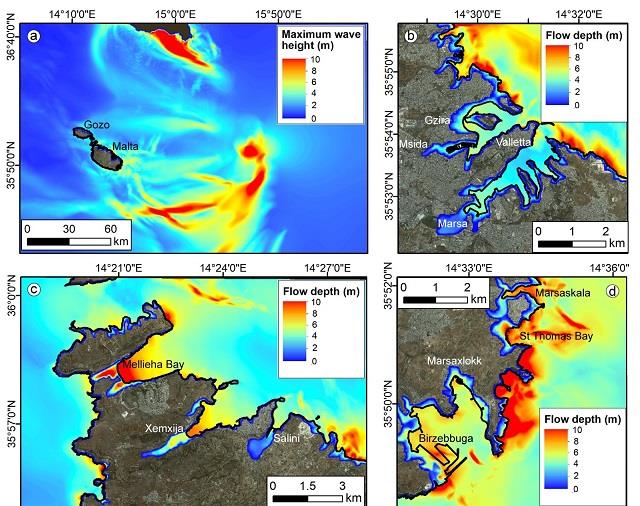Low-lying areas in Mellieħa, Xemxija, Salini, Gzira, Msida, Marsascala, St Thomas Bay, Marsaxlokk and Birzebbuga will be the most adversely hit parts of Malta if a tsunami were to occur, a study shows.
The study was conducted by the Marine Geology and Seafloor Surveying group within the Department of Geosciences at the University of Malta, and scientists from GNS Science in New Zealand.
“Our study demonstrates that there is a potential tsunami hazard for Malta. Future studies should focus on achieving a better understanding of the source mechanisms, for example by mapping and understanding submarine landslides around the Maltese Islands, and carrying out a probabilistic inundation hazard and risk assessment,” the scientists concluded.
The potential hazards were quantified through four computer simulations, which included two undersea earthquakes off Sicily and Greece, mimicking events comparable to the 365 A.D. western Hellenic Arc event and the 1693 south-east Sicily earthquake, and two undersea landslides offshore Malta and Sicily.
The study found a tsunami inundation was more likely to hit along the eastern coastline of the Maltese Islands. Most of the population and tourist infrastructure of Malta is concentrated along the eastern low-lying coastline, which is therefore highly exposed to a potential tsunami. Tsunamis triggered by submarine landslides of the size considered in this study are rare and estimated to occur once in 5,000 to 50,000 years.

The study shows that the tsunami hazard for the Maltese Islands is poorly defined, and historic records are available for only two recent events.
The last significant tsunami to hit Malta was in 1908 as a result of a 7.4 Richter earthquake in Messina, Sicily that killed around 200,000 people. The tsunami caused waves to crash into Msida creek, flooding homes and shops. No one was killed.
Experts recently warned that the South-Eastern side of Mt Etna in Sicily is slowly sliding into the sea and could collapse suddenly, causing a tsunami in the Mediterranean. A large part of the eastern side of Mt Etna is believed to have collapsed some 7,000 years ago, causing a major tsunami in the central and eastern Mediterranean.